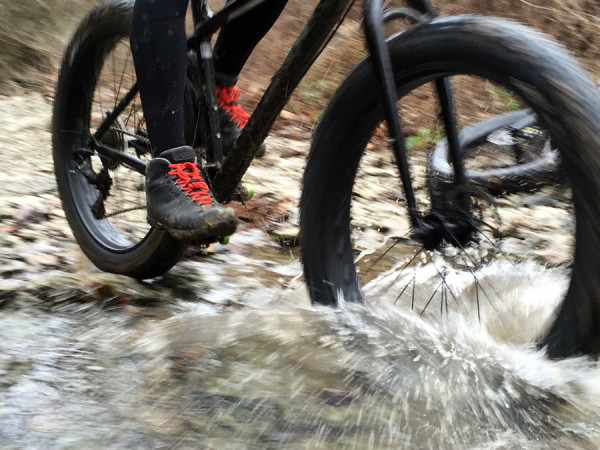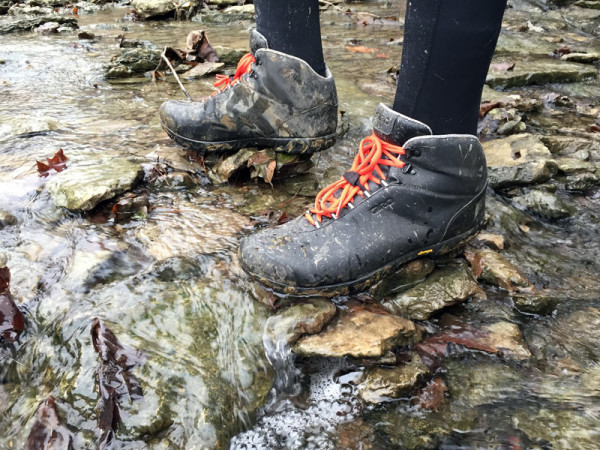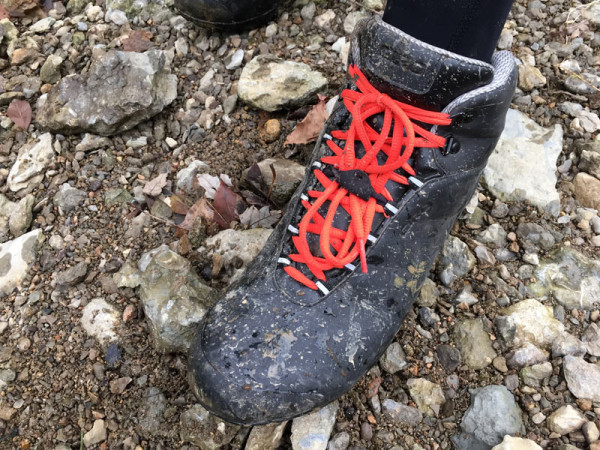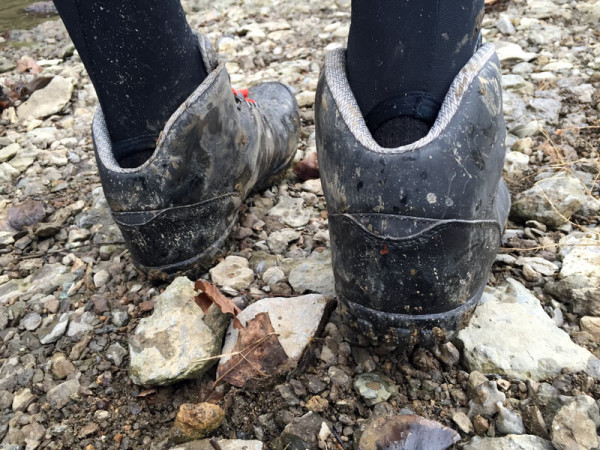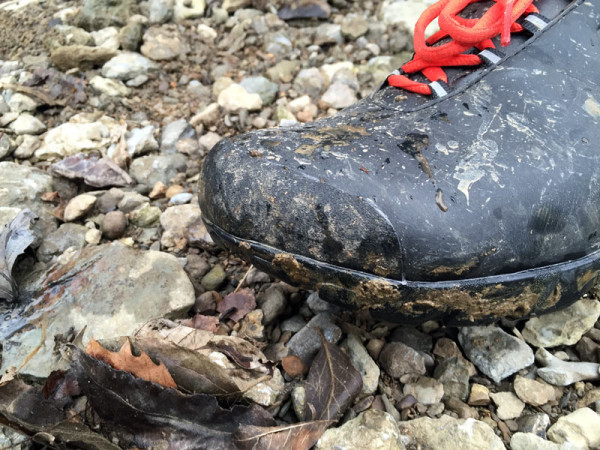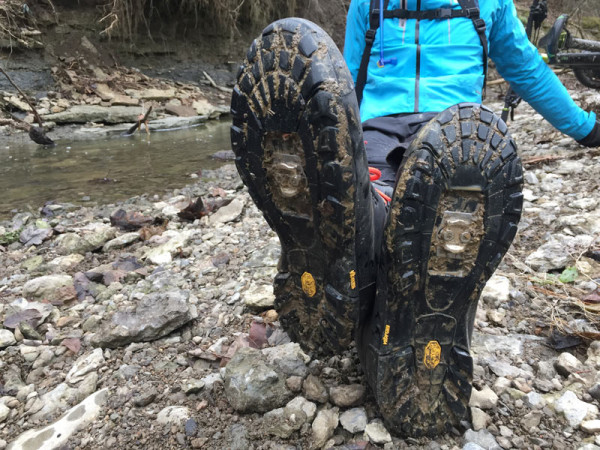The Giro Alpineduro shoes borrow the brand’s lace-up style from their Empire road and mountain bike shoes, but use it to close up a fantastic looking winter cycling boot disguised as a legit hiker. Our first look ran through the technical details and actual weight, so this one’s focused on their performance out on the trail, in the cold and through the water.
I’ve worn them for the past couple months on rides as low as 40ºF (4.4ºC) 28ºF (-2.2ºC), with either standard cycling socks or medium-thick wool socks from Defeet. The rides carried me across streams, over log crossings and up and down mountains and through a few cyclocross training rides. Like a good hiking boot, they handled it all and seem to be getting more comfortable the more I wear them…
UPDATE: Zach corrected my low temp figure, he led the ride where these photos were taken and it was indeed below freezing. I’ve updated the rest of the article accordingly. So, yes, they’ll comfortably take you down below freezing.
I tested a size 47, which weighed in at 568g per shoe. That’s lighter than the more extreme Lake MXZ303 boots Zach’s testing, but a bit more than the Shimano winter shoes I tested a couple years ago. Both of those shoes are designed to be deep winter, everything proof shoes, though. The Giro’s thread the line between style and performance, with no particularly ambitious claims to cold- or water proofing, but they ended up excelling at both in the temps and conditions tested. Granted, I didn’t step in anything deeper than the stream crossing above, but my feet never got cold or wet…and there were plenty of ridden stream crossing opportunities for them to get soaked.
The lace up style allowed for a pretty good amount of fit customization, but it was a little tough to keep the top of the laces pulled tight enough while tying them. The lace loop keeps the laces from flopping around. It’s elastic seemed a bit flaccid, but it never failed me.
Regarding fit, I still remember the first time I tried on Giro’s shoes when they were first introduced in 2010. They were narrow, with small toe boxes and I found them very uncomfortable. The reps suggested I wait until the wide sizes become available, and then I just kinda forgot about testing them until the road Empire showed up unannounced. Whether Giro refined the last or the upper, I’m not sure, but I’ve had pretty good luck with the fit of their lace-up models. Still, though, when I first slip my feet into them, they do feel snug, taking a minute or two for my feet to settle into them. That said, they don’t seem to cramp my toes and haven’t ever been uncomfortable when riding. It could just be that I’m much more used to my Keens, which have a very wide toe box and relaxed fit on most styles.
The high sides protect the ankles very well. Even with their padded thickness, I didn’t find them rubbing on the cranks too often. The dipped heel cutout makes for easier hike-a-bike scrambles, and it’s here that getting the laces tight enough make them more comfortable. On the bike, a bit looser lacing didn’t seem to be an issue, my heels never felt like they were pulling up and out. But when walking up unridable sections, too loose lacing made it feel a little too loose overall.
The sole is stiff enough for all-day cycling, but flexible enough for walking around comfortably. To me, that means they’d be equally adept as winter commuters stylish enough for the office. They come with cleat covers for flat pedal use.
Rubberized toe and heel sections add scuff protection.
The tread blocks are broad, but not too deep. The keeps too much mud from accumulating on them. On slick dirt and mud, there’s not as much walking traction as something with deeper lugs, but on rocks, roots and logs, the Vibram rubber is tacky and provides sure footing. I ran them with both Eggbeaters and Candy pedals (Crank Brothers) and found that they worked much better with the Eggbeaters since those pedals have no platform. The cleat sits recessed slightly in the thick rubber outsole, which made clipping into the Candies a bit trickier. I did not try them with SPD style pedals. The solution is likely as simple as cutting down the tread directly adjacent to the cleats just a bit.
After two months of riding in them, I’m loving them. They look fantastic, feel great and do an admirable job of keeping my feet warm and dry.
They retail for $200 and are available in whole sizes only, from 37 to 48. I tested the 47 but have been testing a 48 in the Empire MTB and am kinda liking the extra wiggle room for my piggies. I’m thinking a size up on these would allow for thicker socks and improve the warmth rating a bit. Giro offers a 60 day comfort guarantee, so you could try either size knowing you could easily swap them out, no questions asked.
